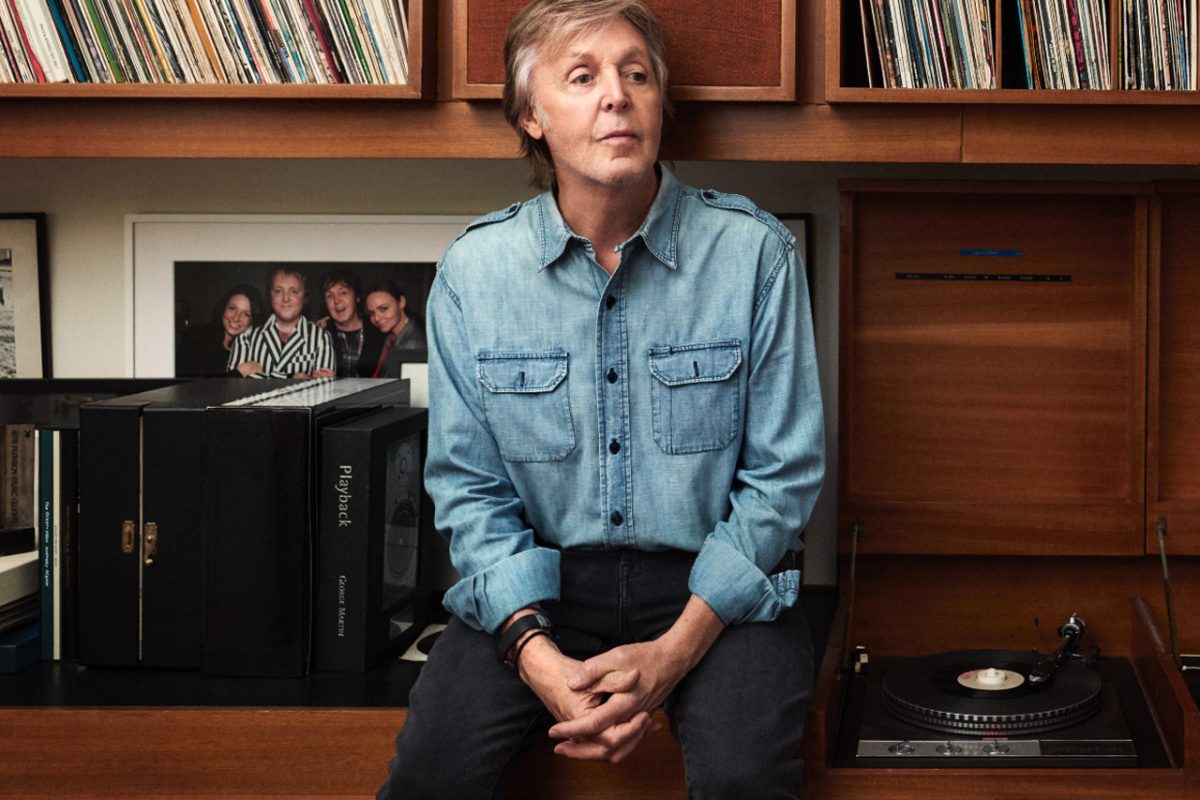The Beatles’ Paul McCartney Praises Jamaica, Reggae: “A Great Adventure”

The Beatles’ Sir Paul McCartney has written glowingly, and at length, about his experiences crate-digging at record shops in Montego Bay, decades ago as he discovered Reggae music, in what he said was “A Great Adventure.”
In the foreword to the liner notes for his new The 7” Singles Box, a collection of 80 45s spanning his solo career, from 1971, the former Beatles frontman wrote of how he would sift through crates of records, with clerks providing him with information on obscure Jamaican artists.
“Some of my happiest memories of buying 7-inch singles come from the Jamaican record shop that we used to go to when we were on holiday in Montego Bay,” the 80-year-old notes.
“In the town there was this place called Tony’s Records on Fustic Road. It was great. There were records you didn’t know what they were, they weren’t established artists. So it was kind of a great adventure, just asking the guy behind the counter, “What’s this like? Is it any good?” he adds.
McCartney was one of the two frontmen and lead songwriters for The Beatles, an English rock band that was formed by himself and John Lennon in Liverpool in 1960 before alter adding bandmates Ringo Starr and “the quiet beetle” George Harrison. With estimated sales of 600 million units globally, The Beatles, which formally split in December 1974, are the best-selling music act of all time.
McCartney, who was the second-youngest member of the band was born on June 18, 1942, and in addition to being a singer and songwriter, also played the bass guitar. Together, as founding members, he and John Lennon are regarded as of the most successful songwriting teams in the history of popular music.
As he continued in the foreword, which was reprinted by Rolling Stone in an article, McCartney named some of the memorable tracks he found at the Montego Bay record shop.
“There would be songs with titles like Lick I Pipe (Jacob Miller). Another was called Poison Pressure by Byron Lee and the Dragonaires written by Lennon & McCartney. I had to buy that one. Had they just recorded one of our songs? No. It was something completely different and we all presumed it might be a couple of guys called Tony Lennon and Bill McCartney. Either that, or it was a total scam,” he quipped.
“Something we noted on those 7-inch singles in Jamaica is that they did the same thing as the early 1960s vocal groups: The B side would be the A side’s instrumental, titled something like ‘sing-along’ –they would just take the vocal off. On these Jamaican records, they would call it ‘version’”. McCartney continued.
He adds: “I remember being in a club and some guy who was a little bit of a hustler was showing us around. This song came on and I said, “Oh, I love this. Did you just take the vocal off?” And he would not accept that they’d just taken the vocal off. He saw it as a completely blank canvas.”
The #7InchSinglesBox features 163 tracks over 10 hours of music, and contains a 148-page book with a foreword by Paul. Each box also comes with one exclusive randomised test pressing 📀 Pre-order here: https://t.co/rPPgEJx7Ky
— Paul McCartney (@PaulMcCartney) November 10, 2022
According to The Paul McCartney Project website, the singer first visited Jamaica in early December 1971, with his wife Linda and their children for some time off where “they discovered and fell in love with Reggae music, which inspired her to write her first song, Seaside Woman .
“We both loved the music and going to Jamaica became our big ambition. When we did, we really fell in love with it: the country, the people, the music, the lifestyle, the weather. We spent weeks there, soaking up a lot of Reggae – it was the start of rap but they used to call it toasting… we always used to say that if all the money went, if we became broke, then we’d go to Jamaica and live in a little shack. After our first visit to Jamaica, Linda wrote her first song, Seaside Woman,” he is quoted as saying in 2002.
McCartney, who has spent a lot of time in Jamaica at the prestigious Round Hill Hotel in Hanover, over the years, also stated in the notes that, in addition to the Montego Bay experiences, he still enjoys crate-digging to this day.
“I’ve always found there’s something exciting about flicking through the crates in a record shop, looking for that next discovery. I still love it and there are some cool independent record shops near my office in London,” he states.
Sir Paul’s The Singles Box is set for release on December 2. It contains his Reggae/Rocksteady songs such as Love is Strange, and C-Moon.
As for The Beatles, they made their first attempt at Jamaican music in 1964 with I Call Your Name, which shifted into a ska beat in the middle eight bars.
On The Beatles’ The White Album which was released in 1968, McCartney is said to have been the one who developed Ob-La-Di, Ob-La-Da, a song with a Rocksteady beat, which “rode high on the Jamaican charts.”
After the Beatles’ breakup, McCartney took on Reggae in his 1970s solo work, beginning with his On Wild Life album in 1971, the first by his band Wings. On this album, McCartney recorded Love is Strange.
In 1972, the band released C Moon and Hi, Hi, Hi as a double A-side single. However, Hi, Hi, Hi was slapped with an official ban by the BBC for what the media house thought were its “sexually suggestive lyrics”, resulting in the C Moon Reggae track getting more airplay in England.
In 1979, after going solo once more, McCartney recorded the holiday staple Wonderful Christmastime, and went Reggae once more with the instrumental Rudolph the Red-Nosed Reggae on the B-side.
